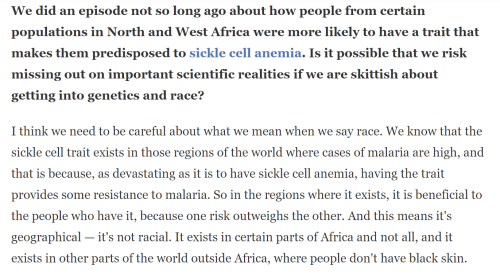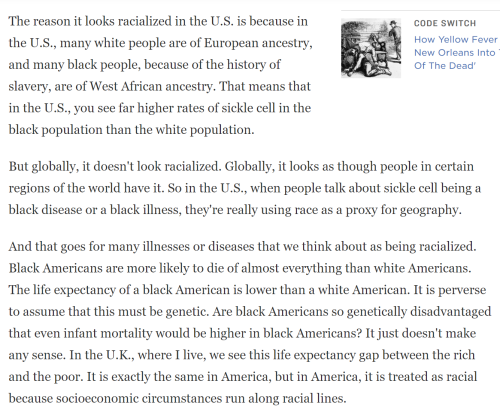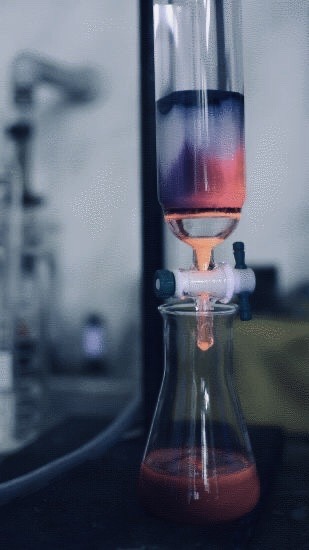Microcosms (2023)





Microcosms (2023)
linocuts on colored paper
(diatom species pictured: Stauroneis acuta, Pleurosigma inflatum, Triceratium pentacrinus, Actinoptychus heliopelta)
More Posts from Mikrobiotch and Others

The Ig Nobel Prize, for scientific research that makes people laugh and then makes them think. This year's winners!
CHEMISTRY and GEOLOGY PRIZE [POLAND, UK] Jan Zalasiewicz, for explaining why many scientists like to lick rocks. REFERENCE: “Eating Fossils,” Jan Zalasiewicz, The Paleontological Association Newsletter, no. 96, November 2017. Eating fossils | The Palaeontological Association (palass.org) WHO TOOK PART IN THE CEREMONY: Jan Zalasiewicz
LITERATURE PRIZE [FRANCE, UK, MALAYSIA, FINLAND] Chris Moulin, Nicole Bell, Merita Turunen, Arina Baharin, and Akira O’Connor for studying the sensations people feel when they repeat a single word many, many, many, many, many, many, many times. REFERENCE: “The The The The Induction of Jamais Vu in the Laboratory: Word Alienation and Semantic Satiation,” Chris J. A. Moulin, Nicole Bell, Merita Turunen, Arina Baharin, and Akira R. O’Connor, Memory, vol. 29, no. 7, 2021, pp. 933-942. doi.org/10.1080/09658211.2020.1727519 WHO TOOK PART IN THE CEREMONY: Chris Moulin, Akira O’Connor
MECHANICAL ENGINEERING PRIZE [INDIA, CHINA, MALAYSIA, USA] Te Faye Yap, Zhen Liu, Anoop Rajappan, Trevor Shimokusu, and Daniel Preston, for re-animating dead spiders to use as mechanical gripping tools. REFERENCE: “Necrobotics: Biotic Materials as Ready-to-Use Actuators,” Te Faye Yap, Zhen Liu, Anoop Rajappan, Trevor J. Shimokusu, and Daniel J. Preston, Advanced Science, vol. 9, no. 29, 2022, article 2201174. doi.org/10.1002/advs.202201174 WHO TOOK PART IN THE CEREMONY: Te Faye Yap and Daniel Preston
PUBLIC HEALTH PRIZE [SOUTH KOREA, USA] Seung-min Park, for inventing the Stanford Toilet, a device that uses a variety of technologies — including a urinalysis dipstick test strip, a computer vision system for defecation analysis, an anal-print sensor paired with an identification camera, and a telecommunications link — to monitor and quickly analyze the substances that humans excrete. REFERENCE: “A Mountable Toilet System for Personalized Health Monitoring via the Analysis of Excreta,” Seung-min Park, Daeyoun D. Won, Brian J. Lee, Diego Escobedo, Andre Esteva, Amin Aalipour, T. Jessie Ge, et al., Nature Biomedical Engineering, vol. 4, no. 6, 2020, pp. 624-635. doi.org/10.1038/s41551-020-0534-9 REFERENCE: “Digital Biomarkers in Human Excreta,” Seung-min Park, T. Jessie Ge, Daeyoun D. Won, Jong Kyun Lee, and Joseph C. Liao, Nature Reviews Gastroenterology and Hepatology, vol. 18, no. 8, 2021, pp. 521-522. doi.org/10.1038/s41575-021-00462-0 REFERENCE: “Smart Toilets for Monitoring COVID-19 Surges: Passive Diagnostics and Public Health,” T. Jessie Ge, Carmel T. Chan, Brian J. Lee, Joseph C. Liao, and Seung-min Park, NPJ Digital Medicine, vol. 5, no. 1, 2022, article 39. doi.org/10.1038/s41746-022-00582-0 REFERENCE: “Passive Monitoring by Smart Toilets for Precision Health,” T. Jessie Ge, Vasiliki Nataly Rahimzadeh, Kevin Mintz, Walter G. Park, Nicole Martinez-Martin, Joseph C. Liao, and Seung-min Park, Science Translational Medicine, vol. 15, no. 681, 2023, article eabk3489. doi.org/10.1126/scitranslmed.abk3489 WHO TOOK PART IN THE CEREMONY: Seung-min Park
COMMUNICATION PRIZE [ARGENTINA, SPAIN, COLOMBIA, CHILE, CHINA, USA] María José Torres-Prioris, Diana López-Barroso, Estela Càmara, Sol Fittipaldi, Lucas Sedeño, Agustín Ibáñez, Marcelo Berthier, and Adolfo García, for studying the mental activities of people who are expert at speaking backward. REFERENCE: “Neurocognitive Signatures of Phonemic Sequencing in Expert Backward Speakers,” María José Torres-Prioris, Diana López-Barroso, Estela Càmara, Sol Fittipaldi, Lucas Sedeño, Agustín Ibáñez, Marcelo L. Berthier, and Adolfo M. García, Scientific Reports, vol. 10, no. 10621, 2020. doi.org/10.1038/s41598-020-67551-z WHO TOOK PART IN THE CEREMONY: María José Torres-Prioris, Adolfo García
MEDICINE PRIZE [USA, CANADA, MACEDONIA, IRAN, VIETNAM] Christine Pham, Bobak Hedayati, Kiana Hashemi, Ella Csuka, Tiana Mamaghani, Margit Juhasz, Jamie Wikenheiser, and Natasha Mesinkovska, for using cadavers to explore whether there is an equal number of hairs in each of a person’s two nostrils. REFERENCE: “The Quantification and Measurement of Nasal Hairs in a Cadaveric Population,” Christine Pham, Bobak Hedayati, Kiana Hashemi, Ella Csuka, Margit Juhasz, and Natasha Atanaskova Mesinkovska, Journal of The American Academy of Dermatology, vol. 83, no. 6, 2020, pp. AB202-AB202. doi.org/10.1016/j.jaad.2020.06.902 WHO TOOK PART IN THE CEREMONY: Christine Pham, Natasha Mesinkovska, Margit Juhasz, Kiana Hashemi, Tiana Mamaghani
NUTRITION PRIZE [JAPAN] Homei Miyashita and Hiromi Nakamura, for experiments to determine how electrified chopsticks and drinking straws can change the taste of food. REFERENCE: “Augmented Gustation Using Electricity,” Hiromi Nakamura and Homei Miyashita, Proceedings of the 2nd Augmented Human International Conference, March 2011, article 34. doi.org/10.1145/1959826.1959860 WHO TOOK PART IN THE CEREMONY: Homei Miyashita, Hiromi Nakamura
EDUCATION PRIZE [CHINA, CANADA, UK, THE NETHERLANDS, IRELAND, USA, JAPAN] Katy Tam, Cyanea Poon, Victoria Hui, Wijnand van Tilburg, Christy Wong, Vivian Kwong, Gigi Yuen, and Christian Chan, for methodically studying the boredom of teachers and students. REFERENCE: “Boredom Begets Boredom: An Experience Sampling Study on the Impact of Teacher Boredom on Student Boredom and Motivation,” Katy Y.Y. Tam, Cyanea Y. S. Poon, Victoria K.Y. Hui, Christy Y. F. Wong, Vivian W.Y. Kwong, Gigi W.C. Yuen, Christian S. Chan, British Journal of Educational Psychology, vol. 90, no. S1, June 2020, pp. 124-137. doi.org/10.1111/bjep.12549 REFERENCE: “Whatever Will Bore, Will Bore: The Mere Anticipation of Boredom Exacerbates its Occurrence in Lectures,” Katy Y.Y. Tam, Wijnand A.P. Van Tilburg, Christian S. Chan, British Journal of Educational Psychology, epub 2022. doi.org/10.1111/bjep.12549 WHO TOOK PART IN THE CEREMONY: Christian Chan, Katy Y.Y. Tam, Wijnand A.P. Van Tilburg
PSYCHOLOGY PRIZE [USA] Stanley Milgram, Leonard Bickman, and Lawrence Berkowitz for experiments on a city street to see how many passersby stop to look upward when they see strangers looking upward REFERENCE: “Note on the Drawing Power of Crowds of Different Size,” Stanley Milgram, Leonard Bickman, and Lawrence Berkowitz, Journal of Personality and Social Psychology, vol. 13, no. 2, 1969, pp. 79-82. psycnet.apa.org/doi/10.1037/h0028070 WHO TOOK PART IN THE CEREMONY: Len Bickman
PHYSICS PRIZE [SPAIN, GALICIA, SWITZERLAND, FRANCE, UK] Bieito Fernández Castro, Marian Peña, Enrique Nogueira, Miguel Gilcoto, Esperanza Broullón, Antonio Comesaña, Damien Bouffard, Alberto C. Naveira Garabato, and Beatriz Mouriño-Carballido, for measuring the extent to which ocean-water mixing is affected by the sexual activity of anchovies. REFERENCE: “Intense Upper Ocean Mixing Due to Large Aggregations of Spawning Fish,” Bieito Fernández Castro, Marian Peña, Enrique Nogueira, Miguel Gilcoto, Esperanza Broullón, Antonio Comesaña, Damien Bouffard, Alberto C. Naveira Garabato, and Beatriz Mouriño-Carballido, Nature Geoscience, vol. 15, 2022, pp. 287–292. doi.org/10.1038/s41561-022-00916-3 WHO TOOK PART IN THE CEREMONY: Bieito Fernandez Castro, Beatriz Mouriño-Carballido, Alberto Naveira Garabato, Esperanza Broullon, Miguel Gil Coto

Pseudomonas aeruginosa is one of the most pleasant bacteria to identify from a microbiologist's perspective. In turn, from the veterinarian's point of view - one of the worst to treat.

It's not the best "microbiology" art, but it has a very interesting background. Two bacteria from two different clinical cases were inoculated on the TSCB medium. This metallic blue spilling bacterium is of course Pseudomonas aeruginosa. The yellow one (positive reaction on TSCB medium) is Vibrio metschnikovii isolated from chronic UTI in a dog. It was an unusual microbiological diagnosis. But what can you do when even your dog has a better holiday than you? Problems with urination (in this dog) began just after returning from the Mediterranean, the owners and the dog intensively used the charms of warm and salty water.

A new species of African legless skink, genus Acontias Cuvier, 1816 “1817” (Squamata: Scincidae) from Serra da Neve inselberg, south-western Angola
Mariana P. Marquesa, Diogo Parrinha, Arthur Tiutenko, et al.
ABSTRACT
During a recent survey of the Serra da Neve inselberg in south-western Angola, a population of legless skinks of the genus Acontias was found. Only three species of this genus have been recorded for the country so far – A. occidentalis, A. kgalagadi and A. jappi. Using an integrative approach and combining molecular and morphological data we found that the Serra da Neve population represents a new species, closely related to species such as A. percivali and some members of the A. occidentalis species complex. In this paper, we describe this population as a new species, Acontias mukwando sp. nov. and provide brief comments on its conservation and biogeography.
Read the paper here:
Full article: A new species of African legless skink, genus Acontias Cuvier, 1816 “1817” (Squamata: Scincidae) from Serra da Neve inselberg, south-western Angola (tandfonline.com)


This NPR interview with with Angela Saini about how race science never really left the global scientific consciousness is super interesting! I’m gonna read her book!







lil chemistry moodboard for motivation 🧪🥼
-
 71-percent-soup liked this · 4 months ago
71-percent-soup liked this · 4 months ago -
 polo-yaoman liked this · 5 months ago
polo-yaoman liked this · 5 months ago -
 secretllair liked this · 5 months ago
secretllair liked this · 5 months ago -
 steggmatt liked this · 5 months ago
steggmatt liked this · 5 months ago -
 tumultuoustuna liked this · 5 months ago
tumultuoustuna liked this · 5 months ago -
 opheliasongs reblogged this · 5 months ago
opheliasongs reblogged this · 5 months ago -
 kokiri liked this · 5 months ago
kokiri liked this · 5 months ago -
 opheliasongs liked this · 5 months ago
opheliasongs liked this · 5 months ago -
 onthegreatsea reblogged this · 5 months ago
onthegreatsea reblogged this · 5 months ago -
 mayyak liked this · 5 months ago
mayyak liked this · 5 months ago -
 soul-teller reblogged this · 5 months ago
soul-teller reblogged this · 5 months ago -
 soul-teller liked this · 5 months ago
soul-teller liked this · 5 months ago -
 soilnewtown reblogged this · 5 months ago
soilnewtown reblogged this · 5 months ago -
 goopi-e reblogged this · 5 months ago
goopi-e reblogged this · 5 months ago -
 goopi-e liked this · 5 months ago
goopi-e liked this · 5 months ago -
 nox-wells liked this · 6 months ago
nox-wells liked this · 6 months ago -
 0rbwizard liked this · 6 months ago
0rbwizard liked this · 6 months ago -
 ghostofasecretary liked this · 6 months ago
ghostofasecretary liked this · 6 months ago -
 b-blushes reblogged this · 6 months ago
b-blushes reblogged this · 6 months ago -
 milkdrawsthings liked this · 6 months ago
milkdrawsthings liked this · 6 months ago -
 toandfrosch liked this · 7 months ago
toandfrosch liked this · 7 months ago -
 leap-of-faithil reblogged this · 7 months ago
leap-of-faithil reblogged this · 7 months ago -
 leap-of-faithil liked this · 7 months ago
leap-of-faithil liked this · 7 months ago -
 jaypdub liked this · 7 months ago
jaypdub liked this · 7 months ago -
 augustbirch reblogged this · 8 months ago
augustbirch reblogged this · 8 months ago -
 augustbirch liked this · 8 months ago
augustbirch liked this · 8 months ago -
 wise-blue-cookies liked this · 8 months ago
wise-blue-cookies liked this · 8 months ago -
 munchk1t liked this · 8 months ago
munchk1t liked this · 8 months ago -
 krittyko liked this · 9 months ago
krittyko liked this · 9 months ago -
 gingerjaydraws liked this · 9 months ago
gingerjaydraws liked this · 9 months ago -
 lobotomyicecreamhead reblogged this · 9 months ago
lobotomyicecreamhead reblogged this · 9 months ago -
 babygirl-beldaruit liked this · 9 months ago
babygirl-beldaruit liked this · 9 months ago -
 forvirresky reblogged this · 9 months ago
forvirresky reblogged this · 9 months ago -
 forvirresky liked this · 9 months ago
forvirresky liked this · 9 months ago -
 mommyswiththemaggotsnow reblogged this · 9 months ago
mommyswiththemaggotsnow reblogged this · 9 months ago -
 idk-im-not-creative liked this · 9 months ago
idk-im-not-creative liked this · 9 months ago -
 citrusdisco reblogged this · 9 months ago
citrusdisco reblogged this · 9 months ago -
 citrusdisco liked this · 9 months ago
citrusdisco liked this · 9 months ago -
 fabricsweetner reblogged this · 9 months ago
fabricsweetner reblogged this · 9 months ago -
 fabricsweetner liked this · 9 months ago
fabricsweetner liked this · 9 months ago -
 pixelcherries liked this · 9 months ago
pixelcherries liked this · 9 months ago -
 defsiarte reblogged this · 9 months ago
defsiarte reblogged this · 9 months ago -
 defsiarte liked this · 9 months ago
defsiarte liked this · 9 months ago -
 laaxrun reblogged this · 9 months ago
laaxrun reblogged this · 9 months ago -
 goorduard liked this · 9 months ago
goorduard liked this · 9 months ago -
 anonymous428315516723114213 reblogged this · 9 months ago
anonymous428315516723114213 reblogged this · 9 months ago -
 anonymous428315516723114213 liked this · 9 months ago
anonymous428315516723114213 liked this · 9 months ago -
 emil reblogged this · 9 months ago
emil reblogged this · 9 months ago -
 koenji reblogged this · 9 months ago
koenji reblogged this · 9 months ago



